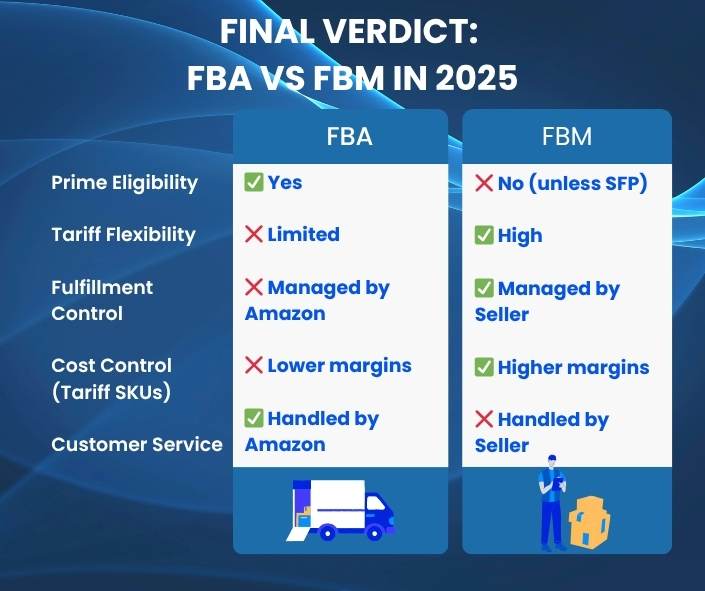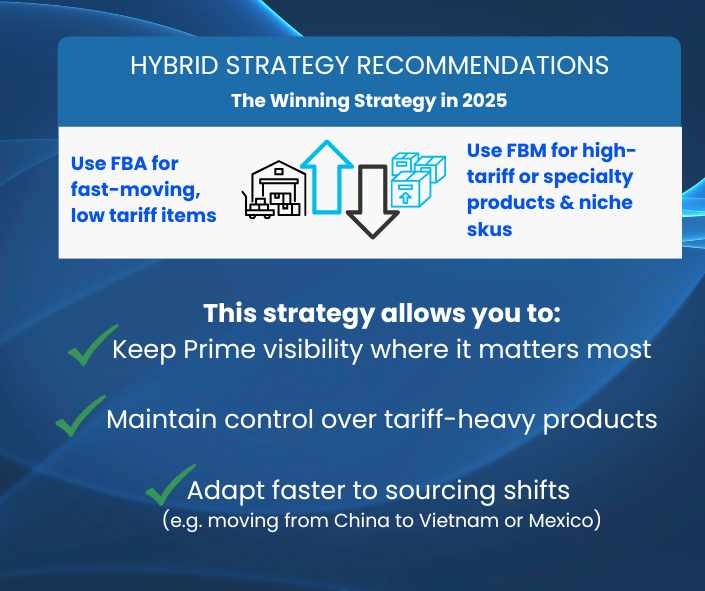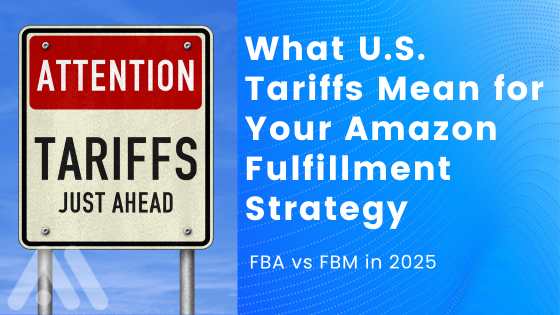As we move through 2025, Amazon sellers are facing a new wave of challenges and opportunities—none more pressing than the return of U.S. tariffs on Chinese imports. With increased pressure on margins, sellers are re-evaluating every aspect of their operations, starting with one critical question:
FBA vs FBM — which fulfillment model makes more sense in today’s tariff-driven economy?
If you’re weighing the pros and cons of Fulfillment by Amazon (FBA) vs. Fulfillment by Merchant (FBM) in light of rising import costs, this blog will help you navigate the decision in 2025’s evolving ecommerce landscape.
What’s New in 2025: U.S. Tariffs and Their Impact on Amazon Sellers
The Biden administration reintroduced and expanded tariffs on a wide range of Chinese goods in Q2 2025—specifically targeting consumer electronics, home goods, and certain categories within health and beauty. For Amazon sellers sourcing from China, this means:
Higher landed costs on inventory
More pressure on margins and pricing strategies
Increased demand for flexibility in fulfillment and logistics
These changes make the FBA vs FBM decision more critical than ever.

FBA in 2025: Is It Still Worth It?
FBA continues to offer sellers powerful benefits—but with new considerations in 2025.
Pros:
Prime Eligibility still boosts traffic and conversions
Hands-off logistics: Amazon handles shipping, returns, and customer service
Fast delivery expectations met automatically
Cons (especially under new tariffs):
Storage fees have increased, especially for aged or slow-moving inventory
Lack of flexibility in managing tariff-heavy SKUs—once stock is inbound to Amazon, you’re locked in
Limited control over profit margins when your cost of goods has increased due to import duties
If you’re sourcing tariffed items and using FBA, your landed cost + Amazon fees may outweigh the convenience.
FBM in 2025: Rising in Popularity for a Reason
FBM has historically been the choice for large sellers with existing logistics infrastructure—but in 2025, even small and mid-sized sellers are moving in this direction.
Pros:
Full control over your supply chain—especially when working with U.S.-based 3PLs or alternative sourcing hubs outside China
Lower fees compared to FBA’s storage, inbound, and fulfillment costs
Ability to pivot quickly when tariffs shift or costs spike
Cons:
Not Prime-eligible (unless you join Seller Fulfilled Prime, which has strict requirements)
You must manage shipping, returns, and customer service
Tougher competition for Buy Box if you’re slower or less reliable than Amazon fulfillment
But if you’re already being squeezed by tariffs, FBM gives you the margin control FBA lacks.
Hybrid Selling: The Winning Strategy in 2025?
With the unpredictability of global trade policies, many Amazon sellers are adopting a hybrid model—leveraging FBA for high-volume, low-tariff SKUs, and FBM for high-tariff or specialty products.
This strategy allows you to:
Keep Prime visibility where it matters most
Maintain control over tariff-heavy products
Adapt faster to sourcing shifts (e.g. moving from China to Vietnam or Mexico)

In a tariff-heavy year like 2025, FBM offers sellers more flexibility, better cost control, and faster adaptation to sourcing challenges. However, FBA still wins for convenience, customer trust, and Prime traffic—especially on fast-moving items not impacted by new import duties.
Watch Your Margins Like a Hawk
If you’re sourcing tariffed products and using FBA, re-calculate your true landed cost in 2025. The difference between profit and loss may come down to a few percentage points that FBM can help you recover. The question isn’t just FBA vs FBM anymore—it’s how can I use both to win? In 2025, agility is your biggest advantage. Smart sellers are diversifying fulfillment, shifting sourcing strategies, and choosing flexibility over dependence. Want help evaluating your strategy? At AIA Assets, we help Amazon sellers navigate critical business shifts.Speak with the AIA Assets team and make 2025 your most profitable year yet—despite the tariffs.

